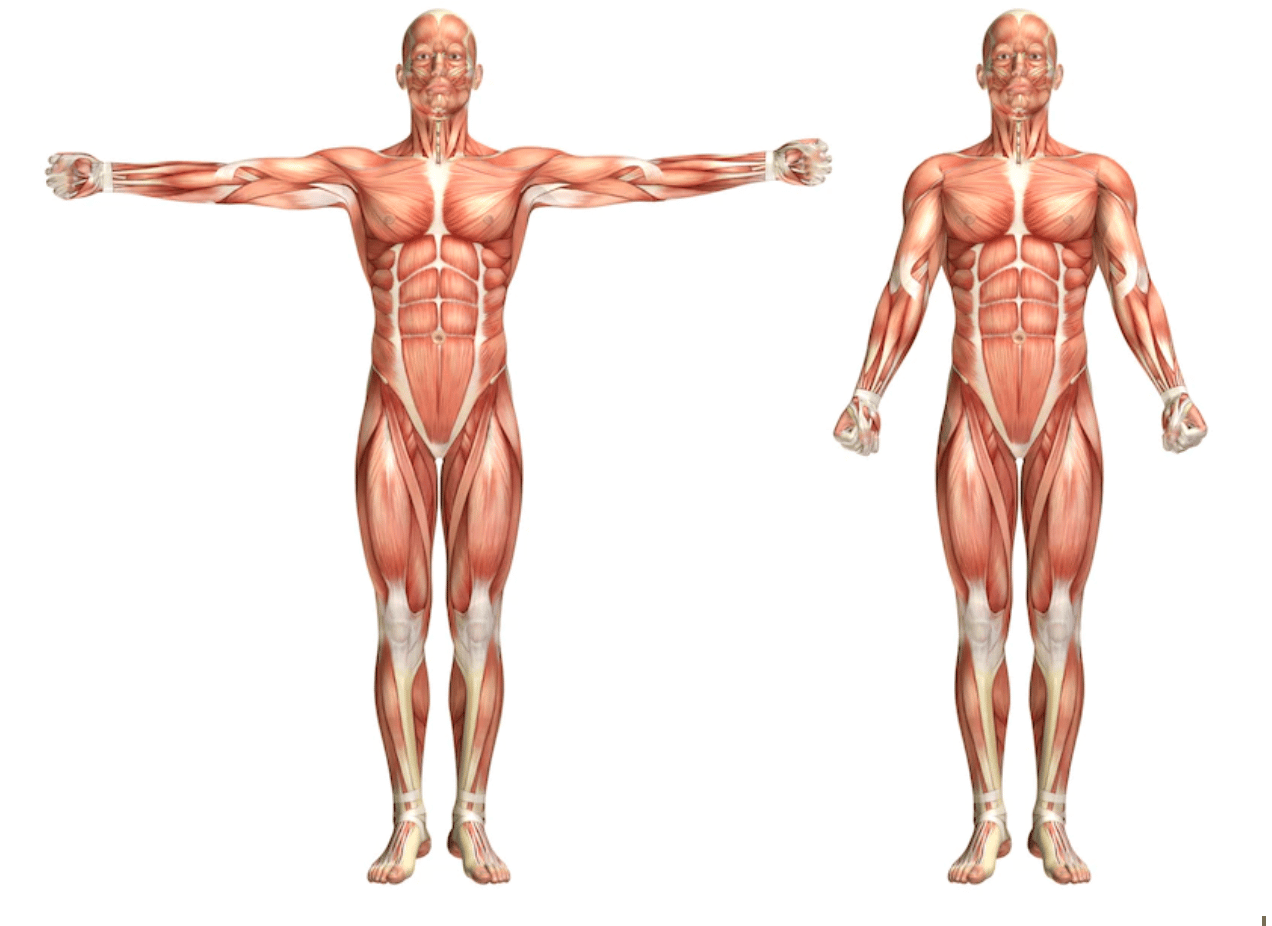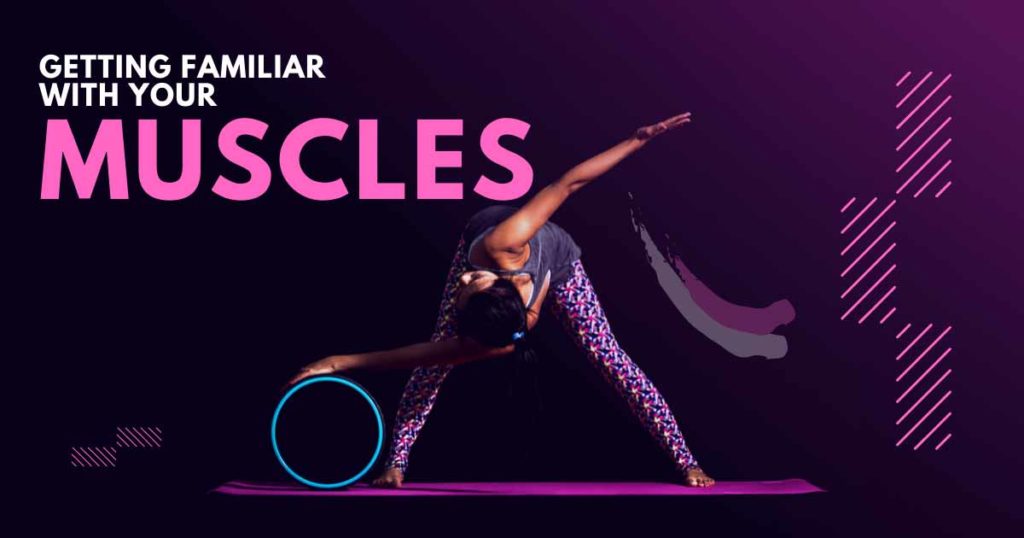The human muscular system is made up of soft tissues.
How many muscles are in the human body? More than 600. They help you move, lift and even sit still. Others can help with breathing, vision, and digestion of food.
Your heart is included among these, pumping blood through your body.
Injuries and diseases can harm the function of your muscular system, but eating right, exercising, and maintaining a healthy weight are all things you can do to keep the muscles in the body strong and functioning at a peak level.
Three Types of Muscular System
There are three general types of muscular systems in your body. Some of these are controlled voluntarily by your nervous system. You move them by thinking about them. Others work involuntarily, so you can’t control them. They work automatically, taking cues from other systems in your body, like your cardiovascular or digestive systems.
Your three types of muscular systems include:
- Skeletal: These are part of your musculoskeletal system. These work with your bones, ligaments, and tendons. Your tendons attach the muscles of the skeletal system to the bones throughout your body, supporting your weight and allowing you to move. You control their movement, making them voluntary muscles.
- Cardiac muscles: Aside from your skeletal muscles, there is also your cardiac muscular system. These types of muscles line the walls of your heart, and they help it pump the blood supply that travels around your body through your blood vessels. They’re involuntary muscles, so you don’t control them.
- Smooth: The smooth muscle system lines inside your organs, including your stomach and intestines. They’re also automatic, working without you telling them what to do.
General roles of muscular systems and muscle contractions in the body include:
- Breathing, swallowing, and speaking
- Functions of the digestive tract
- Moving, standing upright, and sitting still
- Pumping blood
- Giving birth to a baby
- Hearing and seeing
Major Muscular Groups
Along with grouping them by the system, you can also compare the functions of the muscular system by grouping them based on function or where they’re located in the body.
The Chest
The primary muscular group of your chest is your pectorals.
Having a well-developed, strong chest is important because it helps add size to your upper body and can add both force and weight to other athletic activities.
Pectorals, also known as pecs, are packed with thick skeletal muscle fibers. Your chest is divided into the pectoralis major and the pectoralis minor. These support you when you hold things in front of your body, and they’re activated in many of your most fundamental everyday movements.
The Back
Your back has the most complex muscular structure in your body. These muscles all work together and complement each other in activities you do daily. There are five separate groups of muscular components here which include:
- The latissimus dorsi stretches to the sides, behind your arm, and your trapezius partly covers it. The lats help with pulling movements and compliment your arms’ movements.
- Your rhomboids are in your upper back, not visible from the outside because they’re beneath the trap muscles.
- The trapezius are also known as the traps, and they’re between your shoulders and neck.
- The teres muscle is under your lats and works with them and the rotator cuff. Compound exercises like rows and deadlifts target this particular muscle.
- The erector spinae is a set of muscles that help straighten and rotate your back. They’re deep muscles, and they’re pivotal for posture as well as bending forward or sideways.
Arm and Shoulders
The arm and shoulders include biceps, triceps, and deltoids.
- Biceps are found in the front of your upper arm and are essential when you’re lifting. They help the movement of your arm, including bending or curling it toward you.
- Your triceps are in the back of the arm, stabilizing your shoulder joint. Your triceps help your elbow straighten, and they’re used in various movements, including sports and anything involving pushing and pulling.
- The deltoids are used for all body lifting movements. They help support you if you’re carrying something.
Abdominal Muscle Systems
The abdominals or abs are involved in twisting motions, protecting your organs.
The group on the sides of your abs is the obliques. Your core also includes your pelvic floor muscles.
Legs and Buttocks
- Your hamstrings are a big muscle group on the back of your legs. Hamstrings help you bend your knee, which involves running, jumping, and walking. If you’re weight training, your hamstrings focus on squats and deadlifts.
- The gluteals, also known as glutes, are your butt muscles. They’re the largest in your body. This muscular system functions in your glutes, helping you stay balanced when you run or walk.
- Quadriceps or quads are four big muscles at the front of your thigh. They are the second-largest muscles in the body as far as the structure itself.
- Your calves are also known as gastrocnemius. They’re in the lower back of your leg, helping you walk, run and make your way upstairs. They’re also important for explosive physical activities like sprinting and jumping.

Interesting Facts About Your Muscular System
Whether it’s your skeletal muscles or other muscles in the body, there are some interesting facts to keep in mind that help you understand not just weight and strength training but other body functions.
- Your muscular systems account for around 40% of your total body weight.
- The heart works the hardest, pumping around five quarts of blood a minute. That’s around 2,000 calories a day.
- Muscle fibers are cells that make up your muscular systems. These fibers can lengthen or shorten as needed, and nearly all movement in your body occurs because of the contractability of your muscular systems.
- Your inner ear contains the smallest muscles in the body: the stapedius and the tensor tympani.
- Based on the size, your strongest muscle is your jaw, also known as the masseter. Your jaw can close your teeth worth force that’s as great as 200 pounds on the molars.
- Your brain’s motor cortex, on one side, controls movement on the other side of your body.
- For the most part, muscles work in pairs. When one shortens, the one that corresponds with it will lengthen. You can consider the example of a bicep curl. When you curl your arm up, making your bicep shorter, the triceps on the other side of your arm is then straight.
- Your muscles can’t push—they can only pull. They all need exercise to keep them healthy as well.
Your muscular system is powerful, complex, and made to work in unique, fascinating ways. Your muscles can’t do all the work independently, though—they need your help. If it’s time to explore new workouts for power and strength, get in touch with our team of fitness professionals. Muscle weakness isn’t something you have to accept in your life, nor should you.
Even if you have certain medical conditions or muscle pain, there are functional fitness routines you can do when working with our expert trainers to help you gain strength and power.
To learn more about maximizing your results and strengthening each muscle group (the right way), contact Fort Fitness in Laguna Hills, CA, by calling 949-544-1557.




